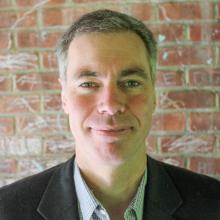One question that hangs over conversations between passive house builders and architects is “Where is the market?”. It’s one of the most urgent questions in the passive house and high performance space and its heard repeatedly at all of the conferences and gatherings. High performance architects and builders are looking for visibility in the market. They need to know what’s going on in the near term.
Why is it important for an architect or builder to have visibility in the market? Because they are going to each make individual decisions about their business, about what to say to prospects when they talk to them, about whether or not to train their staff, about how to pitch certain projects. There’s a list of things to do when making a commitment to building passive or building this capacity within a firm.
But how can architects or their firms make that commitment if they don’t know what is driving the market, what the readiness is of different populations to opt for passive, how many clients are likely to be receptive to the virtues of passive or what would make those clients receptive to it? When a person or company makes an investment they need some ability to forecast what is going to happen as a result of that investment.
Many architects and builders are sold on the merits of passive buildings and want to increase the proportion of this work that their firms do (or even want to exclusively offer this type of building to their clients). But without visibility in the market in the near term—a solid grasp on the number of potential clients are out there (the size of the market) and a handle on how to find them—it is very difficult to make the commitment. The practicalities of running a business get in the way.
There are, of course, a lot of conversations about how to talk persuasively about the merits of passive house or high performance buildings with their clients. This is a good thing, a necessary ability and an ability that will certainly improve over time as we collectively refine the case for this type of building practice. However, persuasion and persuasive communications should be thought of only one item on our to do list. Finding a market is about more than what an architect or builder says to a home buyer or a developer. This requires finding unmet or underserved needs; assessing receptivity of people or populations to solutions or particular actions or ideas; and identifying and surmounting barriers to certain behaviors. This is what we need in order to effectively size a market and see what is necessary to convert a person into a customer. (And, when we go through this exercise, what we’ll is populations of people who want the outcomes these buildings can deliver them and who are willing to pay for them.)
When architects and builders are not given this information about what can drive demand in the near term, all they have when they ramp up on passive capabilities, are articles of faith that the market will be here one day because of policy/code efforts. Those policy/code efforts are great, and very important, but they don’t help architects and builders with the decision they’re facing right now.
So how do we get visibility in the market? By looking closely at barriers, perceptions, behaviors and unmet needs of different populations.
This is how we can we see what is driving the market in the near term AND find the most effective way to sell passive buildings to home buyers and developers. Finding and sizing the market is an exercise that nearly every new venture goes through in order to understand how what they are doing is valued and who is going to be most receptive to it. What populations are most receptive to the virtues of passive buildings and what drives them?
It is important to address this question immediately. If an architect or builder is told that there will be a market in the long term, the logical next question is, “But what do I do in the short term? Is my best option to do nothing for now until this future change in the market occurs?”
The rate of adoption of zero energy buildings (or those close to it) will be severely depressed if architects and builders stand on the sidelines. There are architects and builders who want to change their practices but don’t do so because they just don’t know if it’s feasible for them. How do we get that population of architects to take the jump? And many of the architects and builders who have taken that leap want to know how to increase the number of clients they have for passive house or high performance buildings. By talking about the market now, who the likely customers are now, what the drivers are now, how to find the likely customers now, and how to address the existing barriers to adoption now and while the client is sitting in front of them (and not on some date in the distant future).
Right now the burdens and challenges of getting a home buyer or developer to opt for a high performance building falls disproportionally on the shoulders of architects and builders. This is unfortunate, and it’s slowing down our progress, reducing training rates and lowering conference attendance levels. Builders and architects are at the forefront of this transition and maybe the most important people in the transition to low or zero carbon buildings. But there are things we all need to do to make their job easier and create a situation for them where they can spend more of their time building and designing.
We need more conversations about the market.
Our Mission
NESEA advances sustainability practices in the built environment by cultivating a cross-disciplinary community where practitioners are encouraged to share, collaborate and learn.





Add comment